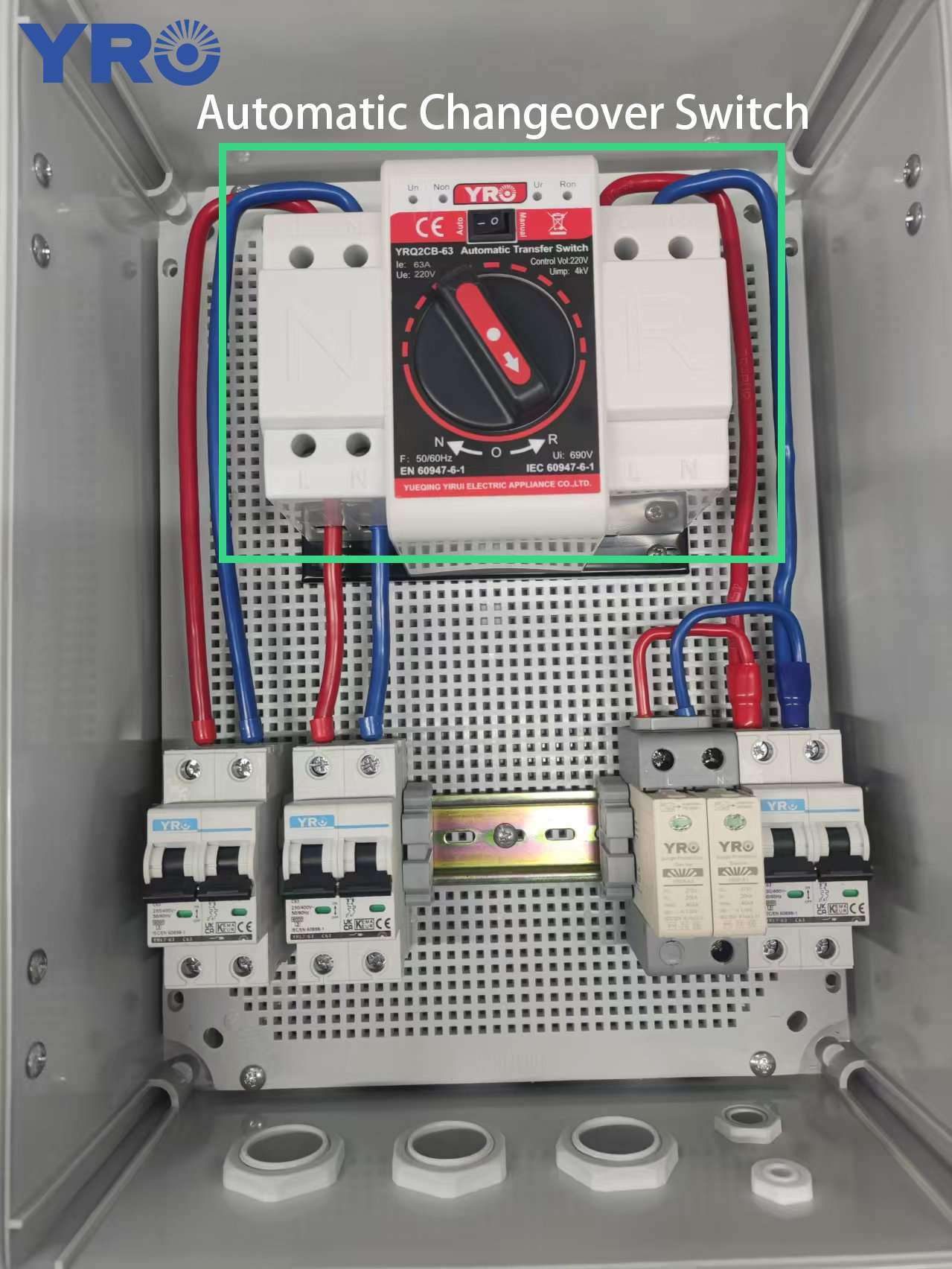What Electrical Components Are Typically Included in a Distribution Box?
2025-03-07
As a vital part of today's power grid, distribution boxes perform two important jobs: delivering power to where it's needed and guarding against electrical hazards. You'll find them in factories, office buildings, and even homes, with circuit breakers, fuses, and other important components installed inside. These components work together like a well coordinated team to achieve the same goal. While maintaining a steady supply of electricity, they constantly monitor for faults and act quickly to stop potential problems before they cause real harm.
What are the general electrical components in a distribution box and what are their functions?
Open the cover of the distribution box, and a dazzling array of components comes into view. We will explain their functions in order from top to bottom and from left to right.
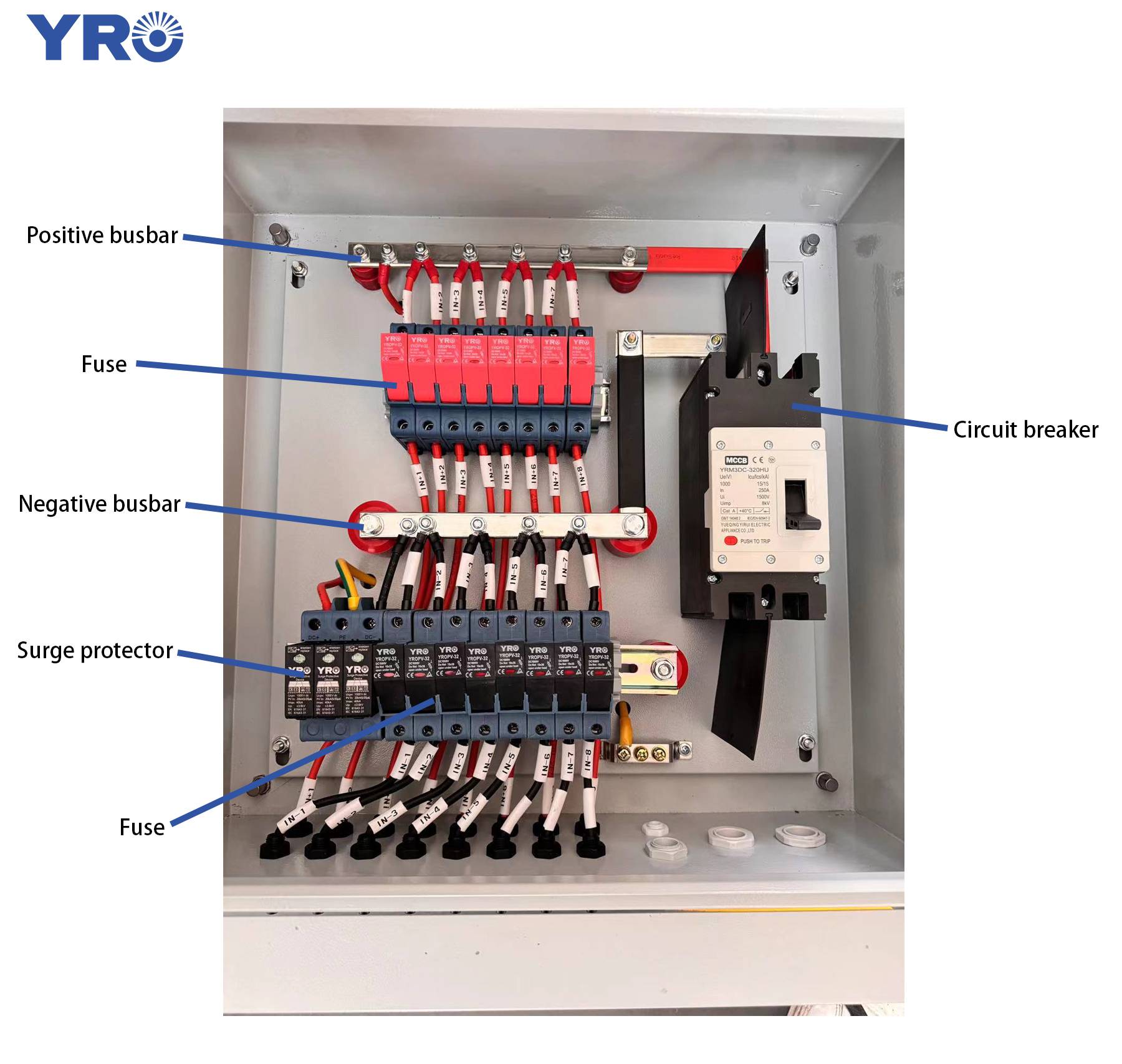
1. Busbar
A busbar is a conductive component in a distribution box that is responsible for connecting positive and negative conductors. The busbar is often made of copper. Because copper has excellent electrical conductivity, it allows power to flow smoothly, reduces power loss, and improves power transmission efficiency. In addition, copper also has high mechanical strength and can withstand large current loads, which is essential to maintain the stable operation of power equipment.
In order to make the performance of the busbar better, it is usually covered with a layer of tin. Tin can prevent copper from oxidizing with air for a long time, avoiding the increase in contact resistance caused by the oxidized layer. In addition, tin plating reduces the chance of arcing and sparking, making electrical connections safer.
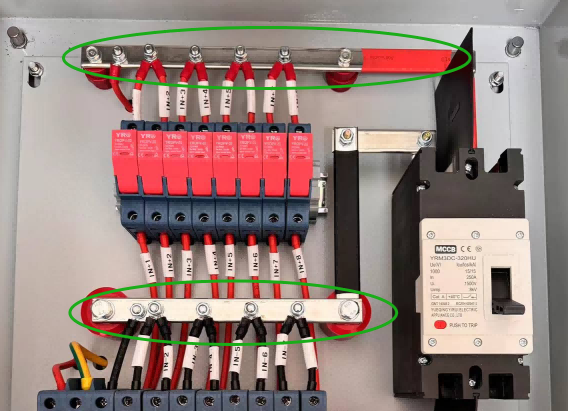
2. Fuse
The main function of the fuse is that when the current exceeds the rated value of the fuse, the fuse holder core will melt due to overheating, thereby cutting off the current and protecting the circuit. You can see that there are two rows of fuses here. The red row above is connected to the positive pole, and the black row below is connected to the negative pole. In electrical connections, red usually represents the positive pole, and black represents the negative pole. To avoid wiring errors, the appearance design of YRO fuses also follows this principle, using red and black respectively, making the wiring more intuitive. In this way, just by observing the color, you can clearly determine the corresponding connection position, improving the accuracy and safety of installation.
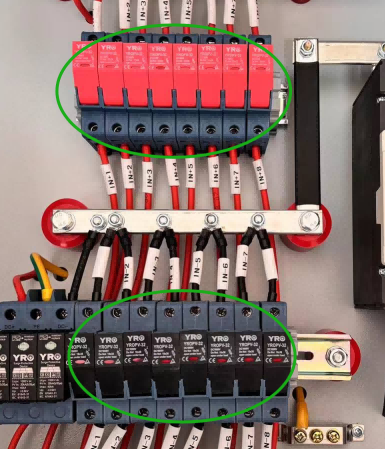
3. Lightning Arrester
Moving on, mounted next to the black fuse is the lightning arrester. Its main function is to prevent electrical equipment from being damaged by transient overvoltages (surges). During the operation of the equipment, if you notice that the indicator light on the lightning arrester turns red, it means that it has experienced a strong surge shock, such as a lightning strike or self protection due to an abnormally high current. At this point, we need to immediately check the operating status of other electrical equipment to make sure they are not affected. It is also important to check whether the SPD itself needs to be replaced, to ensure that it can still provide effective protection subsequently.
Careful students may notice that in the distribution box, in addition to the red and black wires, there is also an exceptionally conspicuous yellow green wire. This wire is connected to the lightning arrester and serves as a ground. Grounding is a very important part of electrical safety, it can be equipment due to faults or leakage of electricity generated by the current safely into the earth, to avoid potential hazards to electrical equipment and personnel. Therefore, this yellow green wire is known as the grounding wire, and its role is to ensure that the current will not flow through the equipment shell to the personnel, to protect the system and the safety of users.
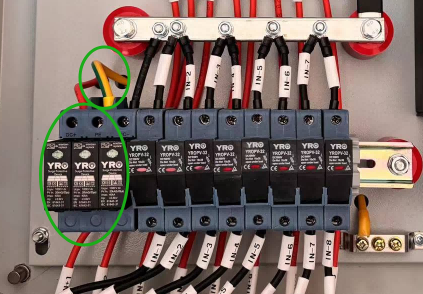
4. Circuit Breaker
Our gaze moves to the circuit breaker on the far right. The circuit breaker is an important component in the distribution box, and is mainly used for the opening and closing of circuits. If the voltage is too high or the current is too large, the circuit breaker will automatically trip, thus protecting the safety of the circuit and equipment.
There are two black things near the circuit breaker. These are arc extinguishing plates. Direct current has a characteristic of arcing. When the red wire and the black wire are connected, but not short circuited and are just close to each other, sparks may occur. This is the arcing phenomenon. The function of the arc extinguishing plate is to prevent this from happening.
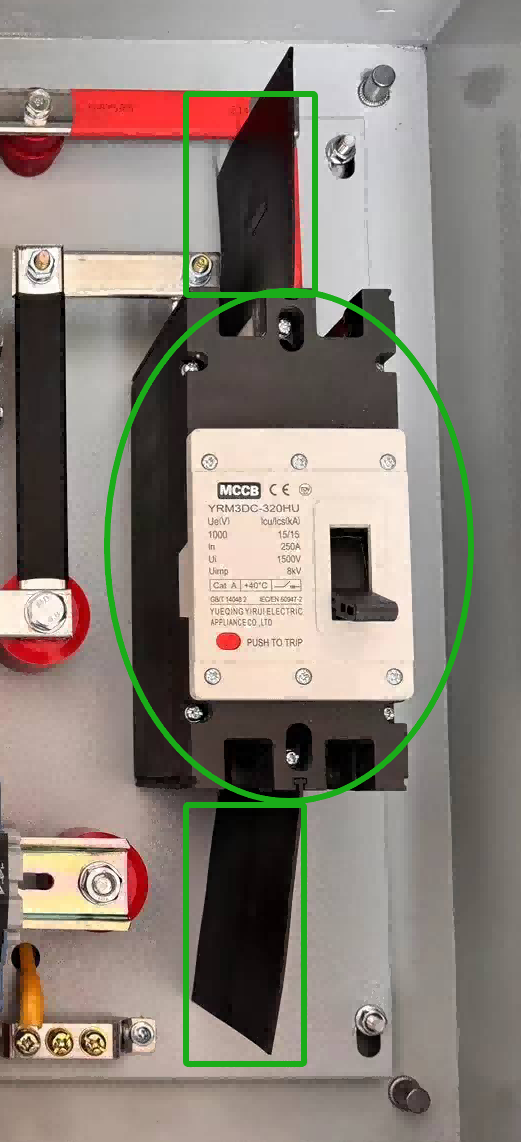
5. Others
In addition to the above components, over/under voltage protectors, automatic changeover switch for dual power supplies, leakage protectors, contactors, etc. can also be installed in the distribution box. These components can be reasonably configured according to actual needs to provide a more comprehensive power protection and control solution.
